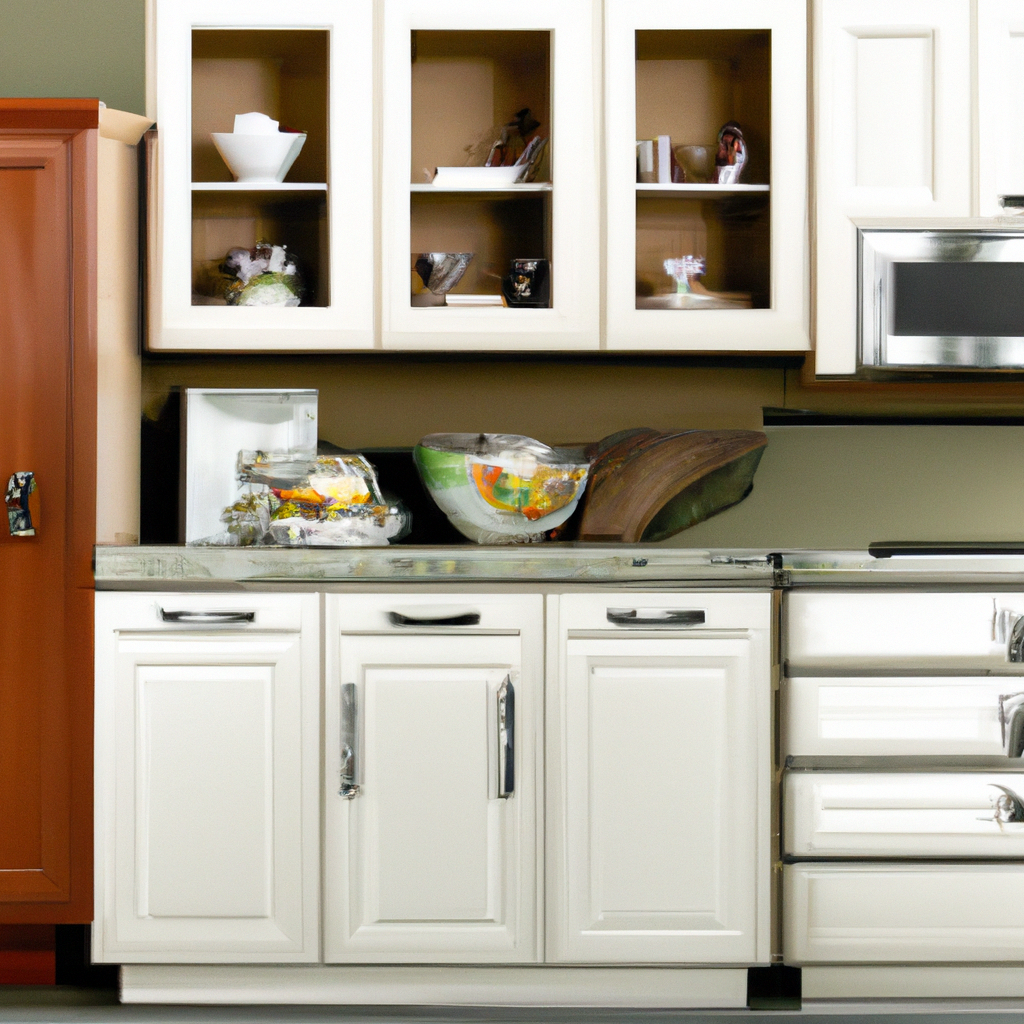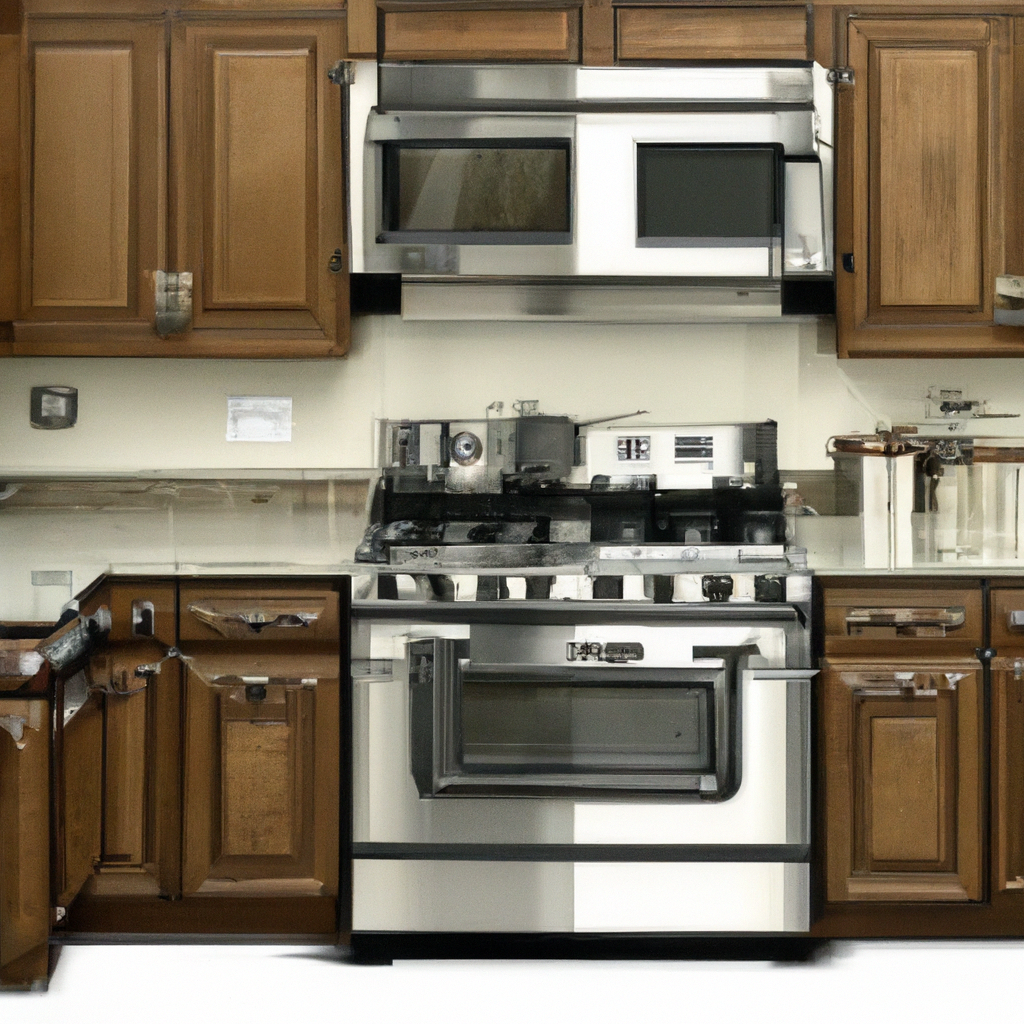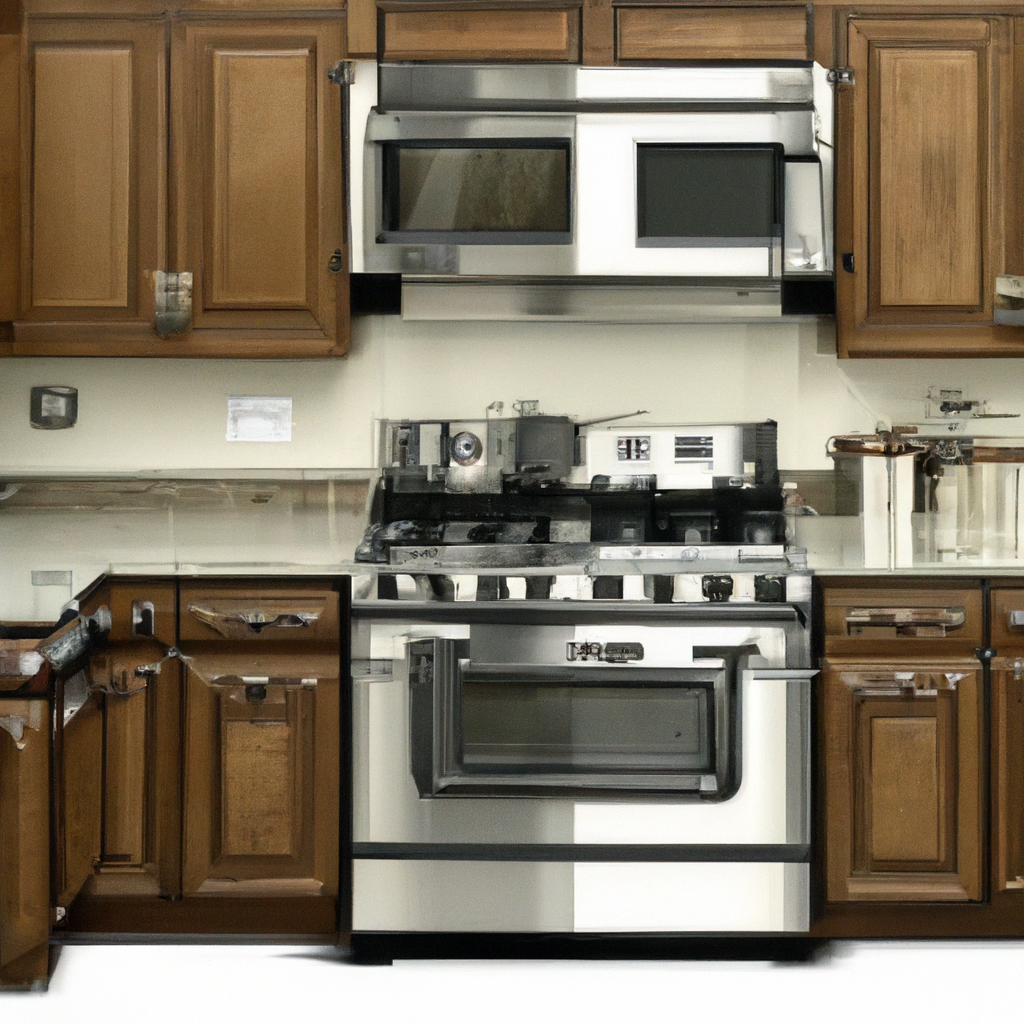Are you planning to renovate your kitchen and looking for the best kitchen cabinets to transform the space? Look no further! This article will provide you with 10 invaluable tips on buying the best kitchen cabinets, ensuring that you make an informed decision and create a stunning and functional kitchen that you’ll love for years to come. From materials and construction to design and functionality, we’ve got you covered. So let’s get started on your journey to finding the perfect kitchen cabinets!

Choosing the Right Style
When it comes to choosing kitchen cabinets, one of the first things you need to consider is the overall design of your kitchen. Take into account the color palette, the flooring, and the appliances already in place. Are you going for a cohesive and traditional look, or do you prefer a modern and minimalist style? By aligning your cabinet style with the overall design, you can create a harmonious and visually pleasing kitchen.
After assessing the overall kitchen design, you’ll need to decide on the specific style of cabinets you want. Traditional cabinets exude a timeless elegance, with intricate details and molding. On the other hand, modern cabinets offer sleek lines and a minimalist aesthetic. Consider your personal taste and the design elements present in your kitchen to determine the style that best suits your needs and preferences.
Once you’ve established the overall style of your kitchen cabinets, it’s time to explore different door styles. From raised panels to flat panels, from glass doors to open shelves, there are a plethora of options to choose from. Each door style has its own unique characteristics and can greatly impact the overall look of your kitchen. Take the time to browse through various door styles and envision how they would fit into your kitchen design.
Another important factor to consider when choosing kitchen cabinets is the cabinet finish. The finish can significantly affect the durability and appearance of the cabinets. Common cabinet finishes include stained wood, painted wood, and laminate. Stained wood offers a natural and warm look, while painted wood allows for more versatility in terms of color options. Laminate finishes are popular for their affordability and ease of maintenance. Consider your lifestyle and the desired look for your kitchen when deciding on the cabinet finish.
Lastly, it’s essential to evaluate the cabinet hardware. While it may seem like a small detail, the hardware can make a big impact on the overall style and functionality of your cabinets. From knobs to pulls, from chrome to brass, there are endless options to choose from. Think about the functionality and accessibility you desire, and select hardware that complements the style of your cabinets. Bold and statement-making or subtle and understated – the choice is yours.
Determining the Material Quality
The material quality of kitchen cabinets is of utmost importance as it directly affects the longevity and durability of the cabinets. One popular choice for high-quality cabinets is solid wood. Solid wood cabinets are known for their strength and resistance to wear and tear. They offer a natural and timeless appeal that can enhance the overall aesthetics of your kitchen. However, keep in mind that solid wood cabinets tend to be more expensive than other materials.
Another material to consider is Medium Density Fiberboard (MDF). MDF cabinets are made from wood fibers combined with resin and wax to create a dense and durable material. They are less prone to warping and have a smooth finish, making them a viable alternative to solid wood cabinets. MDF cabinets are often more budget-friendly while still maintaining quality.
Plywood cabinets are another option to evaluate. Plywood is made by layering thin sheets of wood together, resulting in a strong and stable material. Plywood cabinets are resistant to moisture and can withstand the test of time. They are often considered a premium option and are commonly used in high-end kitchen designs.
For those on a tight budget, particleboard cabinets may be an attractive option. Particleboard is made by binding together wood particles with adhesive. While it is less durable than the other materials mentioned above, particleboard cabinets can still provide decent functionality and appearance at a more affordable price point. However, it’s important to note that particleboard is more susceptible to water damage.
Understanding Cabinet Construction
When shopping for kitchen cabinets, it’s important to understand the different construction methods used. This knowledge will help you make an informed decision regarding the quality and durability of the cabinets you’re considering.
Frameless cabinets, also known as European-style cabinets, have gained popularity for their sleek and modern appearance. These cabinets do not have a face frame, allowing for maximum accessibility and storage space. Frameless cabinets often feature full-overlay doors, giving a seamless and clean appearance to the cabinet fronts. This style is ideal for those who prioritize a contemporary and streamlined look.
On the other hand, framed cabinets are a more traditional option. These cabinets have a face frame that adds structural support and visual interest. The face frame outlines the cabinet openings and provides a traditional and timeless appeal. Framed cabinets are known for their durability and sturdiness, making them a reliable choice for those seeking long-lasting cabinets.
When assessing cabinet construction, it’s important to also consider the cabinet panels. The panels make up the sides, back, and bottom of the cabinet. Solid wood panels are a mark of quality and durability. However, many cabinets feature veneer panels, which consist of a thin layer of wood glued onto a lower-quality material. While veneer panels can give the appearance of solid wood at a lower cost, they may not be as durable in the long run.
Checking the cabinet joints is another crucial step in determining the quality of the cabinet construction. Dovetail joints, often found in high-end cabinets, are known for their strength and durability. These joints interlock the cabinet pieces, creating a strong bond that can withstand constant use. Other joint types, such as butt joints and dowel joints, may be more affordable but may not offer the same level of durability.
Assessing Storage Space
The amount of storage space your kitchen cabinets provide is an important factor to consider, as it directly affects the functionality and organization of your kitchen. Before purchasing cabinets, take accurate measurements of your kitchen space to ensure a proper fit. Consider factors such as ceiling height, wall protrusions, and any obstacles that may affect the placement of your cabinets.
Evaluate the size of the cabinets themselves. Cabinets come in various widths, heights, and depths, so it’s vital to choose the right size to maximize storage capacity. Taller cabinets can make use of vertical space and offer more storage, while deeper cabinets provide additional room for larger items. Take into account your specific storage needs when selecting the size of your cabinets.
Think about the organizational features that are important to you. Adjustable shelves allow for flexibility in storing items of different heights. Pull-out shelves or drawers offer easy access to the contents stored inside. Built-in dividers and organizers can help keep your kitchen essentials neatly arranged. Consider your cooking and storage habits to determine which organizational features will be most beneficial for you.
The design of the shelves itself can also impact the overall usability of your cabinets. Fixed shelves may restrict your ability to store tall or bulky items, whereas adjustable shelves offer versatility. Consider your current and future storage needs to ensure that the shelf design meets your requirements.

Taking Cabinet Functionality into Account
When selecting kitchen cabinets, it’s important to consider their functionality. This includes assessing the construction and design of both the cabinet doors and drawers.
Check the drawer construction to ensure durability and smooth operation. Dovetail joints are considered the gold standard for drawer construction, as they provide strength and longevity. Look for drawers that have full extension slides, allowing you to easily access the entire contents of the drawer. Soft-close drawers provide a gentle and noiseless closing, preventing any slamming that could potentially damage the cabinet or its contents.
Evaluate the cabinet doors to ensure they are sturdy and well-made. Look for doors that are properly aligned, close tightly, and offer smooth operation. Hinges should be adjustable, allowing you to fine-tune the alignment over time. Consider the type of door opening mechanism you prefer – whether it’s standard hinges, hidden hinges, or even sliding doors. The functionality of the doors will greatly impact your everyday use of the cabinets.
If you value a quiet and peaceful kitchen environment, consider cabinets with soft-close features. Soft-close hinges ensure that the doors close gently and silently, preventing any disruptive noise. This feature is especially beneficial if you have young children or if you simply prefer a more serene cooking experience.
Assess the accessibility of the cabinets, particularly if you have specific mobility or ergonomic needs. Cabinets with pull-out shelves or rotating trays can greatly enhance the ease of access to items stored in the back. Consider your own physical limitations and how different cabinet features can accommodate your needs.
Considering Cabinet Customization Options
When choosing kitchen cabinets, it’s important to think about the level of customization you desire. Depending on your budget and personal preferences, you can opt for customizable cabinets, pre-configured cabinets, semi-custom cabinets, or stock cabinets.
Customizable cabinets offer the highest level of personalization. With customizable cabinets, you have complete control over the design, materials, and finishes. This allows you to tailor the cabinets to your exact specifications and create a truly one-of-a-kind kitchen. However, keep in mind that custom cabinets tend to be the most expensive option.
Pre-configured cabinets, also known as ready-to-assemble (RTA) cabinets, come in standard sizes and configurations. These cabinets are typically more affordable and readily available. They still offer a variety of style and finish options, allowing you to find a design that suits your taste. Pre-configured cabinets are a great option for those who want a balance between customization and affordability.
Semi-custom cabinets offer a middle ground between pre-configured and custom cabinets. These cabinets come in standard sizes but allow for more customization options. You can choose from different finishes, hardware, and organizational features, giving you some flexibility to personalize your cabinets. Semi-custom cabinets offer a good compromise between price and customization.
Stock cabinets are the most affordable and readily available option. These cabinets are pre-made and come in standard sizes and styles. While stock cabinets offer limited customization options, they can still provide functionality and quality at a more budget-friendly price. If you are looking for a cost-effective solution and are less concerned with personalization, stock cabinets may be a suitable choice.
Determining the Right Budget
Setting a realistic budget is an important step in the cabinet-buying process. Take into account the overall cost of the cabinets, including materials, hardware, and installation. Research average prices for different types of cabinets and set a budget that aligns with your financial situation.
While it may be tempting to opt for the cheapest cabinets available, it’s important to consider the long-term value. High-quality cabinets may come at a higher upfront cost but can withstand years of use without needing to be replaced. Investing in durable cabinets can save you money in the long run, as you won’t have to worry about frequent repairs or replacements.
In addition to the cost of the cabinets themselves, it’s important to factor in installation costs. If you plan on hiring professionals for the installation, obtain multiple quotes and compare prices. Take into account any additional expenses such as removal of old cabinets, plumbing adjustments, or electrical work. By considering these costs upfront, you can ensure that your budget covers the entire cabinet installation process.
Researching Cabinet Brands
As with any major purchase, it’s essential to research different cabinet brands before making a decision. Reading reviews and testimonials from other customers can provide valuable insights into the quality and performance of the cabinets. Look for brands that consistently receive positive feedback and have a reputation for producing reliable and well-made cabinets.
Take the time to compare different brands and their offerings. Look for brands that offer a wide range of styles, finishes, and customization options to ensure that you can find the cabinets that best suit your needs. Consider factors such as warranty coverage, customer support, and the availability of replacement parts in case any issues arise in the future.
Brand reputation is another important aspect to consider. Established and reputable brands have often built their reputation on providing high-quality products and excellent customer service. While lesser-known brands may offer lower prices, they may not have the same level of reliability and customer satisfaction. Consider the track record and reputation of the brand before committing to their cabinets.
Choosing the Right Cabinet Supplier
After researching different brands, it’s time to explore the various cabinet suppliers available. One option is to visit local retailers and showrooms. This allows you to see the cabinets in person and get a better sense of their quality and appearance. Local retailers also offer the advantage of being able to provide face-to-face customer service and assistance throughout the buying process.
Another option is to consider online cabinet stores. Online shopping offers convenience and a wider selection of cabinets. You can easily browse through different styles and finishes without leaving your home. However, it’s important to carefully research the online supplier before making a purchase. Read customer reviews, check their return policy, and ensure that they have a secure payment system in place.
When evaluating cabinet suppliers, pay attention to their customer service. Responsive and helpful customer service can make a significant difference in your overall buying experience. Look for suppliers who are knowledgeable, prompt in answering your questions, and willing to assist with any concerns that may arise. Good customer service ensures that you receive the support you need throughout the cabinet-buying process.
Taking Time for Proper Measurements
Before finalizing your cabinet purchase, it’s crucial to take accurate measurements of your kitchen space. This includes measuring the dimensions of the walls, floor, and ceiling. Ensure that you account for any irregularities, such as uneven walls or sloped ceilings, as they may affect the installation process.
When measuring your kitchen space, pay close attention to the ceiling height. Cabinets that reach all the way to the ceiling offer additional storage space and can create a more polished look. However, if your ceiling is lower or if there are obstructions such as pipes or vents, you may need to choose cabinets that leave a gap at the top. Understanding the ceiling height will help you select cabinets that fit perfectly in your kitchen.
Assess any wall protrusions or obstacles that may affect the installation of your cabinets. This includes windows, doors, electrical outlets, and plumbing fixtures. Take precise measurements of these obstacles and ensure that the cabinets you choose can be installed without any issues. Proper measurements can save you time and frustration during the installation process.
By following these tips and carefully considering each aspect of your kitchen cabinet purchase, you can make a well-informed decision. Remember to choose a style that complements your kitchen design, opt for high-quality materials, assess the construction and functionality of the cabinets, evaluate the storage space, and select a reputable brand and supplier. Taking the time to research and measure properly will ensure that you end up with the best kitchen cabinets for your home. Happy cabinet hunting!

